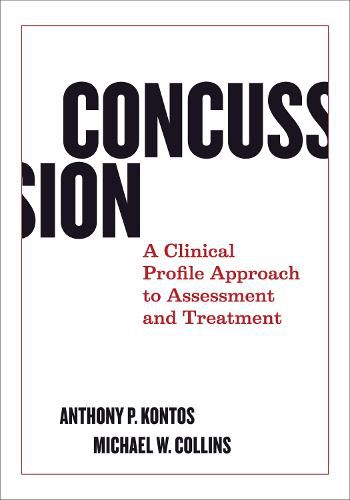Readings Newsletter
Become a Readings Member to make your shopping experience even easier.
Sign in or sign up for free!
You’re not far away from qualifying for FREE standard shipping within Australia
You’ve qualified for FREE standard shipping within Australia
The cart is loading…






Medical consensus once held that all concussions were the same, and treatment for all concussion patients therefore followed the same standard approach. In this volume, Anthony Kontos and Michael Collins debunk the one-size-fits-all approach, arguing instead that individuals who experience concussion respond best to targeted interventions based on their specific clinical profile of symptoms and impairment. In fact, the most commonly prescribed management strategy-rest-can actually prolong recovery time for some individuals.
The authors present a comprehensive, team-based model for assessment and treatment of concussion. Assessment should involve an interdisciplinary lineup that evaluates the patient across multiple domains, including vestibular and oculomotor function, cognitive fatigue, post-traumatic migraine, and anxiety/mood. Based on the individual’s clinical profile, treatment should actively target the affected domains. The book combines empirical evidence with case examples, with special attention to at-risk populations such as athletes, military, and youth.
This resource is essential reading for those who assess, treat, or research concussion, including professionals and students in clinical-counseling psychology, neuropsychology, neurology, neurosurgery, optometry, pediatrics, physical therapy, primary care, sports medicine, and athletic training.
$9.00 standard shipping within Australia
FREE standard shipping within Australia for orders over $100.00
Express & International shipping calculated at checkout
Medical consensus once held that all concussions were the same, and treatment for all concussion patients therefore followed the same standard approach. In this volume, Anthony Kontos and Michael Collins debunk the one-size-fits-all approach, arguing instead that individuals who experience concussion respond best to targeted interventions based on their specific clinical profile of symptoms and impairment. In fact, the most commonly prescribed management strategy-rest-can actually prolong recovery time for some individuals.
The authors present a comprehensive, team-based model for assessment and treatment of concussion. Assessment should involve an interdisciplinary lineup that evaluates the patient across multiple domains, including vestibular and oculomotor function, cognitive fatigue, post-traumatic migraine, and anxiety/mood. Based on the individual’s clinical profile, treatment should actively target the affected domains. The book combines empirical evidence with case examples, with special attention to at-risk populations such as athletes, military, and youth.
This resource is essential reading for those who assess, treat, or research concussion, including professionals and students in clinical-counseling psychology, neuropsychology, neurology, neurosurgery, optometry, pediatrics, physical therapy, primary care, sports medicine, and athletic training.